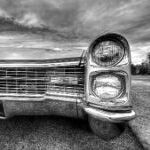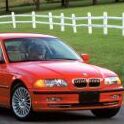William Maley
Staff Writer - CheersandGears.com
October 19, 2013
Automakers are throwing a fair number of alternative fuels in a effort to improve mileage and emissions to see what sticks. General Motors announced this week that they are introducing Bi-Fuel Impala that will be available to fleets and consumers starting next summer. The company points out that the Impala is the only manufacturer-produced, full-size bi-fuel sedan in North America.
The Bi-Fuel Impala can run on compressed natural gas (CNG) and gasoline. The vehicle features two tanks for the fuels and has a total range of 500 miles. The driver can change from CNG to gas and vice versa thanks to a button on the dash.
We'll have more details on the 2015 Bi-Fuel Impala when we get closer to summer sale date.
Source: General Motors
William Maley is a staff writer for Cheers & Gears. He can be reached at [email protected]or you can follow him on twitter at @realmudmonster.
Press Release is on Page 2
Akerson Announces Bi-Fuel Chevrolet Impala Sedan
2013-10-16
-GM to offer only manufacturer-produced full-size bi-fuel sedan in North America
-Designed to capitalize on plentiful clean, domestic natural gas
-Will be sold to retail and fleet buyers as a 2015 model
-CEO repeats call for consumer-driven national energy policy
WASHINGTON, D.C. – General Motors will build a Chevrolet Impala sedan for retail and fleet customers that operates on either gasoline or compressed natural gas (CNG), GM Chairman and CEO Dan Akerson announced today.
It is the only manufacturer-produced full-size bi-fuel sedan and expected to go on sale next summer as a 2015 model. Akerson announced the car during remarks at an energy summit marking the 40th anniversary of the OPEC Oil Embargo.
"OPEC Oil Embargo + 40: A National Summit on Energy Security," was sponsored by the nonpartisan group Securing America's Future Energy, or SAFE. Prominent political, business and military leaders assessed the current state of America's oil dependence since the 1973 oil embargo
Akerson said the bi-fuel Impala is an example of using affordable technology to reduce oil consumption and save consumers money at the pump.
"We know that U.S. energy security won't come from a one-off moonshot," Akerson said. "It will flow from our systematic investment in technology and innovation... our drive to get more from existing energy sources and renewables... our commitment to conservation... and it will be assured by fully and safely exploiting our shale gas reserves."
Natural gas is a cleaner-burning transportation fuel compared to petroleum products, and costs significantly less than gasoline at current prices. CNG vehicles typically have 20 percent fewer greenhouse gas emissions than gasoline-powered cars, according to the California Air Resources Board.
The Chevrolet Impala bi-fuel sedan addresses the range anxiety issue associated with vehicles that run only on natural gas, Akerson said. It features a factory-engineered and fully warranted powertrain that switches seamlessly from CNG to gasoline. Total range is expected to be up to 500 miles.
Akerson said that in addition to advanced technologies and alternative fuels, achieving energy security will require productive partnerships between energy companies, utilities, environmental groups, labor unions, universities and manufacturers.
GM, he said, is working closely with 14 of the country's largest unions and environmental groups through the Blue-Green Alliance, and has relationships with regulators that are "more constructive than ever."
Akerson also reiterated a call he made earlier this year for the Administration and Congress to create a new, consumer-driven national energy policy from a position of strength and abundance.
For its part, GM is committed to saving 12 billion gallons of gasoline in its 2011 to 2017 model year vehicles – offsetting nearly a year of crude imports from the Persian Gulf – with technologies that include lighter materials to reduce vehicle mass, alternative fuels, clean diesel and electrification.
In addition to the Chevrolet Volt, Chevrolet Spark EV and the upcoming Cadillac ELR, GM is introducing start-stop technology standard on the 2014 Chevrolet Malibu helping the midsize sedan achieve 25 mpg city/36 mpg highway, and using electrification to boost fuel economy in the Buick Regal and LaCrosse sedans, which both get EPA-estimated 36 mpg hwy.








-3707742431.jpg.06edf8e14f4ccf35c60d4774a543cc11.jpg)


Recommended Comments
Join the conversation
You can post now and register later. If you have an account, sign in now to post with your account.
Note: Your post will require moderator approval before it will be visible.